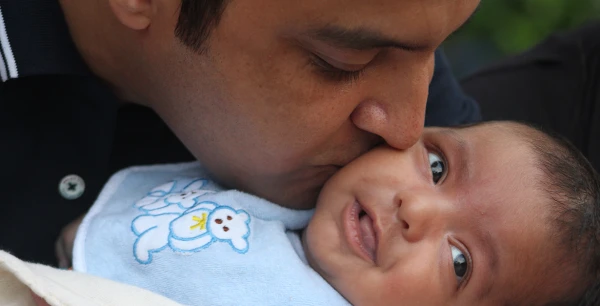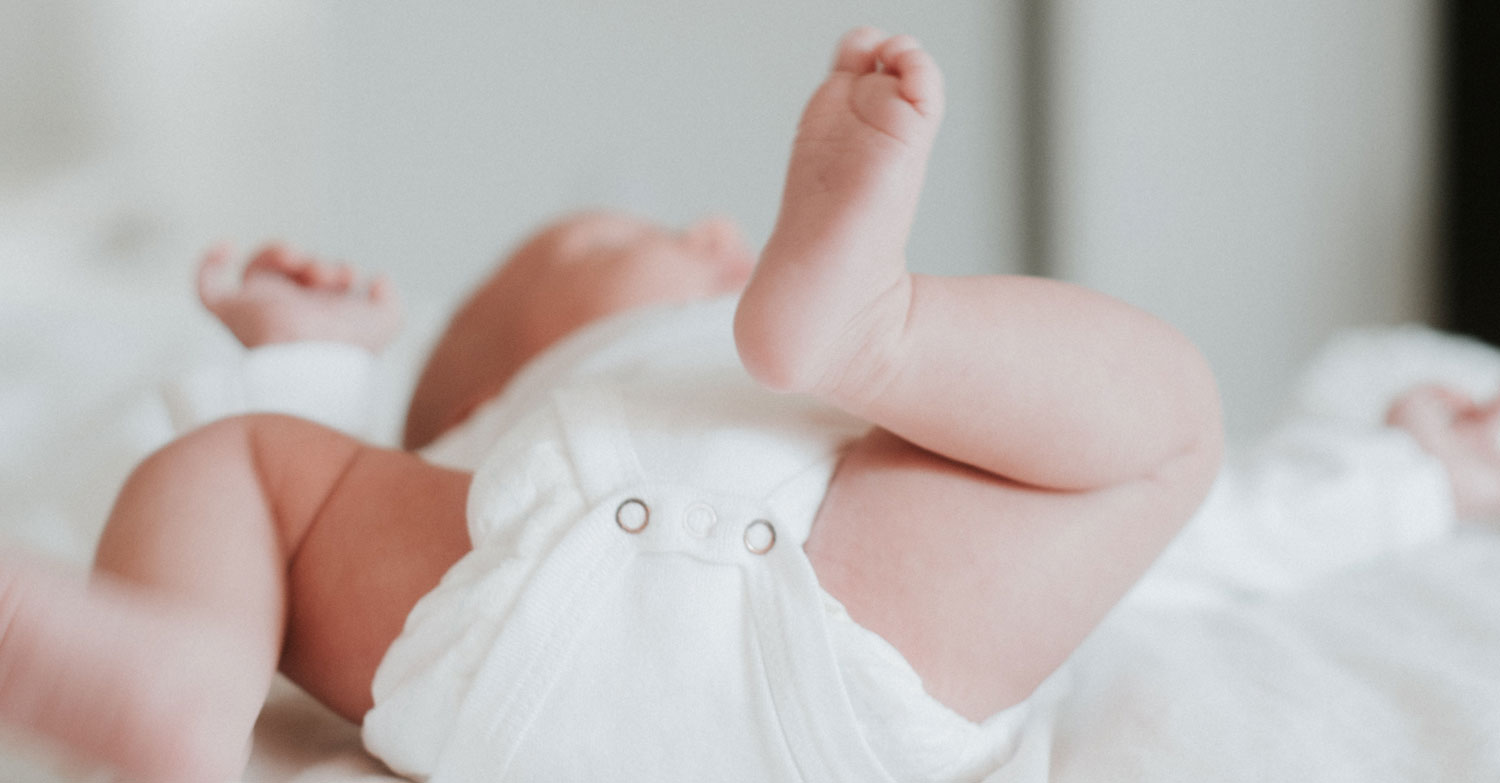 That popular phrase “sleep like a baby” was obviously not coined by a sleep-deprived, exhausted parent. While it’s true that good sleep habits are key to a well-rested baby (and parent!), unfortunately, there’s a myth surrounding baby sleep that babies are either naturally good sleepers or naturally poor sleepers. This is just simply not true: sleep is a learned behavior, and it’s something that parents need to teach their children.
That popular phrase “sleep like a baby” was obviously not coined by a sleep-deprived, exhausted parent. While it’s true that good sleep habits are key to a well-rested baby (and parent!), unfortunately, there’s a myth surrounding baby sleep that babies are either naturally good sleepers or naturally poor sleepers. This is just simply not true: sleep is a learned behavior, and it’s something that parents need to teach their children.
Baby sleep aids are something that can help your baby through every stage of their growth and development, including those pesky sleep regressions.
Newborn to 6 Months
Newborns do not have organized sleep, and are unable to soothe themselves. A newborn sleeps the majority of the time, night and day. Because of this, I do not recommend sleep coaching until your child has achieved a more normalized sleep pattern, which usually happens around 6 months (some babies are ready by 4-5 months, but they are the exception and not the rule). It’s important to encourage your baby to sleep when they show signs of tiredness, and to do this, you can use some simple sleep aids to help soothe your baby:
Swaddling
For infants, swaddling is an effective soothing method that has been around for ages. It’s come under fire recently, especially in daycare settings, so if you chose to swaddle your baby be sure that you are using proper technique, or eliminate the blanket altogether and use a swaddle-capable sleep sack.
Baby Massage
Think about how relaxing massage is for you, mom (or dad). The same principle applies to your baby. Massage is a great way to connect with your baby, while encouraging her to relax, calm down, and prepare for sleep.
A Soothing Bedtime Routine
What better way to set the stage for sleep than to provide you baby with a soothing bedtime routine? Babies (and children) are all about routine. Knowing what comes next is calming, and can help to set the stage for sleep. Some items that you may want to include in your nightly routine: bath, cuddles, story, feeding (if your baby is still taking a bottle or nursing at night), or a quiet lullaby.
6 to 12 Months
There is so much going on during this developmental period. Your baby is rolling over, beginning to crawl, and even starting to walk. All of these developmental changes also make this growth period a surprisingly common time for your baby to experience a sleep regression.
Your soothing bedtime routine can help tremendously. It’s familiar, but be sure that your routine starts early enough that you are putting your baby into bed drowsy but awake to avoid creating a sleep crutch from what should be a soothing routine. You may find that you need to tweak your routine to do this.
Now is also a great time to add a lovey to your baby’s sleep aids.
Introduce a Lovey
A lovey is a great sleep aid for your child. The idea behind introducing a lovey is to help give your baby a constant during sleep times when you are not immediately available. A lovey is most certainly not a replacement for mom, but an extension of your love and caring.
The great thing about a lovey is that it can really be anything. A small blanket, a stuffed animal, a cloth diaper, a teether…as long as the object of choice is safe (no button eyes or removable parts that could present choking hazards), feel free to gradually introduce it to your child. You can help your baby take to the lovey by keeping it close to you during feedings, cuddle and story times, and giving it personality during the day. Many families find that incorporating the lovey into the bedtime routine helps.
Not all children will readily accept a lovey, or even the initial option presented. Watch your child for cues of attachment (are they dragging that bear all over the house? If it’s safe, it’s a prime candidate for a lovey!), and if he doesn’t take to it right away, keep trying. Many children will reject a lovey only to bond with it later.
A note from The Sleep Lady: When choosing a lovey (also called a transitional object) for your child, look for something that is small, soft, and without detachable parts (such as hard eyes or a button nose). Remember, your baby is deceptively strong, and may be able to remove hard items. If you’re at all in doubt, please consult with your pediatrician.
Gentle Sleep Coaching and Drowsy But Awake
6 months is the perfect time to begin your gentle sleep coaching by putting your child into bed drowsy but awake. Begin with The Shuffle, which will teach your baby how to fall asleep on his own with your support and encouragement.
12 to 24 Months
As your baby becomes a toddler, separation anxiety often reappears, and if your child has an established lovey, this can help. To help your child sleep, be sure that you continue with your soothing bedtime routine.
2 Years and Beyond
Most toddlers drop to a single nap during the day, and many children transition to a ‘big’ bed during these years (I highly recommend waiting until 3 years at least to make the transition from crib to bed). These changes are a big deal to your little one, and their established bedtime routine, lovey, and relaxation can help to encourage positive sleep habits.
During the toddler and preschool years, children are often afraid of missing something, anything. They fight sleep, they fight change, and are mobile. There are a few things that you can do to help encourage them to continue with their good sleep habits.
Dream Cards
I created Dream Cards to help guide parents and their children through positive visualization. Although your toddler may not yet be extremely verbal (or coherent) at this stage, helping them to visualize pleasant things to dream about, or even practicing self-relaxation (there’s actually a great card in the pack that tells you how to do this) can help with nighttime issues.
A White Noise Machine
A white noise machine or fan is intended to simply create a barrier between the noise going on in the house (or outside) to help your baby sleep. Look for a machine that is easy to operate. Some even have timers so that you can set them to turn on at bedtime, and off in the morning.
A Night Light
Many toddlers begin to experience nightmares around 2 years, and these can be very troubling both for the child and the parent. Some families find that a night light or toddler flashlight (one that is child-safe) helps to remind the toddler that the monsters aren’t there, and provides additional security.
A Sleep Clock
If you have a child who is up at the crack of dawn, or constantly up and down, in addition to revisiting The Shuffle, a sleep clock can certainly help. This clock is a visual to help your toddler identify the difference between nighttime and wake up time.
If I had to pick the three most important sleep aids that any baby can have, they would be:
• gentle sleep coaching,
• a soothing bedtime routine, and
• going to bed drowsy but awake.
Having a snuggly lovey is just a great bonus.
What sleep aids did you find helped your baby sleep? Was is something on this list?


